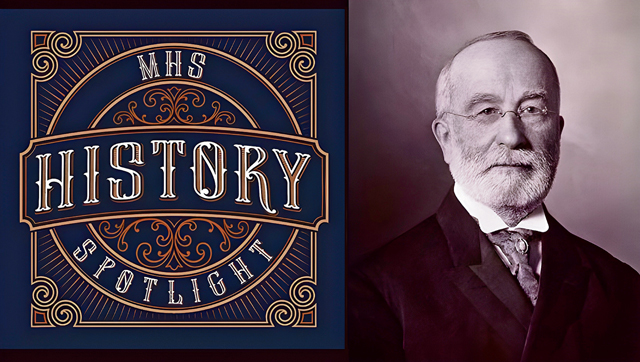
Army Maj. (Dr.) William Williams Keen Jr. was a pioneering military doctor whose career spanned surgical duty on the bloody battlefields of the American Civil War through influential research work during World War I.
Once known as “America’s first brain surgeon,” Keen helped propel numerous advances in medicine. He played a key role in the birth of bacteriology, neurology, use of antisepsis, sterile surgical techniques, brain surgery, and the breakthrough discovery that insects carry and spread diseases.
With a unique perspective after serving in two cataclysmic wars, Keen wrote a 1918 paper journal article on JSTOR’s website called “Military Surgery in 1861 and in 1918.”
In it, he marveled at the knowledge gained in the field of military medicine during his 50 years of service and expressed his excitement for what was to come in the next 50 years and beyond, according to staff at the National Museum of Health and Medicine National Museum of Health and Medicine website in Silver Spring, Maryland.
In his influential paper journal article, Military Surgery in 1861 and in 1918 on JSTOR’s website, Keen lamented the countless deaths during the Civil War that could have been avoided with better military field surgical techniques and surgeons with advanced knowledge.
“Between these two dates is a veritable chasm of ignorance which we can only really appreciate when we peer over its edge and discover how broad and deep it is,” he wrote.
“Clinical observation has done much, but research and chiefly experimental research, has done far more.”
“Research has not yet ceased to give us better and better methods of coping with disease and death, and — thank God — it will never cease so long as disease and death continue to afflict the human race,” he wrote.
Keen’s work played an important role in the significant improvements in battlefield survival rates during conflicts in the 20th century.
Interests and advances
He attributed his expertise to the successes of rigorous research, for which he passionately advocated, according to a profile of Dr. William Williams Keen on the National Museum of Health and Medicine’s website by the National Museum of Health and Medicine, a branch of the Research Support Division of the Defense Health Agency Research and Engineering Directorate.
During the Civil War, Keen developed an interest in documenting injuries of the nervous system. Those studies are considered to be the origin of American neurology.
His service centered on Turner’s Lane Hospital in Philadelphia, Pennsylvania, which was devoted to treating injuries and diseases of the nerves. There, he was an associate of Dr. George R. Morehouse and Dr. S. Weir Mitchell, who was an early believer in what is commonly known as phantom limb pain.
Keen collaborated with both men to write a classic text, “Gunshot Wounds and Other Injuries of Nerves,” published in 1864, said Laura Cutter, an archivist at the museum.
When Dr. Joseph Lister, an influential British surgeon, came to Philadelphia during his 1876 tour of America, Keen heard his views on antisepsis in surgery and was one of the first American surgeons to adopt Lister’s system. In 1892, Keen co-authored the first American surgery text based on Listerian principles, Cutter said.
Keen also gained celebrity as the first surgeon in the Americas to perform a successful brain tumor removal in 1887. As such, he became known as “America’s first brain surgeon.”
He saw surgical duty while still in medical school at the first major battle of the Civil War, the First Battle of Bull Run in Manassas, Virginia, in July 1861. He also served during the Second Battle of Bull Run in August 1862, and, at the deadliest one-day battle in American military history, the Battle of Antietam, Sharpsburg, Maryland, in September 1862.
In March 1862, he was commissioned out of medical school as an acting assistant surgeon in the Union Army and was in charge of Eckington General Hospital near Washington, D.C.


